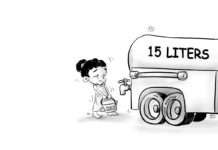[av_textblock size=” font_color=” color=” av-desktop-hide=” av-medium-hide=” av-small-hide=” av-mini-hide=” av-medium-font-size=” av-small-font-size=” av-mini-font-size=”]
[/av_textblock]
[av_one_full first min_height=” vertical_alignment=” space=” custom_margin=” margin=’0px’ padding=’0px’ border=” border_color=” radius=’0px’ background_color=” src=” background_position=’top left’ background_repeat=’no-repeat’ animation=”]
[av_heading heading=’FAITH, HOPE & CHARITY ‘ tag=’h3′ style=’blockquote modern-quote’ size=” subheading_active=’subheading_below’ subheading_size=’15’ padding=’10’ color=” custom_font=” av-medium-font-size-title=” av-small-font-size-title=” av-mini-font-size-title=” av-medium-font-size=” av-small-font-size=” av-mini-font-size=” admin_preview_bg=”]
BY IKE SEÑERES
[/av_heading]
[av_textblock size=” font_color=” color=” av-medium-font-size=” av-small-font-size=” av-mini-font-size=” admin_preview_bg=”]
Thursday, December 7, 2017
[/av_textblock]
[av_textblock size=’18’ font_color=” color=” av-medium-font-size=” av-small-font-size=” av-mini-font-size=” admin_preview_bg=”]
I USED to think that it is impossible to eradicate poverty, because it is a problem that has always been with humankind, even during the biblical times. Recently however, I realized that there is a way to remove or eradicate poverty in the micro level, and allow me to share my thoughts with you on this subject.
Poverty is an economic concept wherein all those belonging to a household that could not afford the imaginary basket of goods are considered poor or are below the poverty line. While that method of measuring poverty may still be valid technically speaking, there is yet another technicality in dissecting the difference between affordability and accessibility.
Naïve as it may seem, I would dare to say that if household members could be given access to the contents of the imaginary basket of goods, by way of reduced prices or extended payment terms, then they would be able to avail of the values of these goods, even if they are still technically poor. This analysis is of course based on the assumption that they would have the means or the mechanisms to avail of these goods.
Goods that are produced by private corporations are necessarily priced high, because they have to cover their high costs of production, distribution and marketing, citing just a few expense areas. Conversely however, goods that are produced by public cooperatives could be priced lower, because their costs could be lower in a controlled micro economy.
Assuming that the goods produced by public cooperatives could be priced lower, it would then follow that the household members would be able to afford what are in the imaginary basket of goods, in effect placing them above the poverty line. This would be difficult to do in an open market macro economy, but it appears to be doable in a closed micro economy.
In a manner of speaking, the household members in a self-contained community that is producing their own goods and services would actually in effect belong to a closed micro economy, because they will be buying the goods and services that they are also producing through their own public cooperatives. The term “public” applies here, because the cooperative shares are available for anyone to buy.
The key words in this discussion are “closed” and “self-contained”, and because of this, it would appear that the ideal locations to pilot this approach are the ancestral domains where the tribal members would be able to organize themselves into public cooperatives. For practical reasons, they need a functional cooperative structure that would complement but not compete with their existing tribal structure.
To meet the criterion of being self-contained, a location has to be small enough to be manageable. In theory, the barangay is supposed to be the smallest unit of governance, but in reality, many barangay units are too big to be manageable. The solution to this limitation perhaps is to scale down the size to the smaller unit of a zone within a barangay. This zonal approach could work in both urban and rural settings.
“Rethinking” is the buzz word in the development circles today. Perhaps we have no choice right now except to stick to the conventional method of measuring the poverty rate, but if we do not rethink the challenge of eradicating poverty, this problem will not disappear. Obvious as it may seem, the apparent solution is to make the goods in the imaginary basket reachable or accessible as the case may be, so that more households will be able to afford it.
Access to clean and potable water is a good example of explaining this concept. In many locations today, there is no access to clean water, and that is why the people in these locations have to spend for bottled water. To solve this, a local zone could put up a cooperative that will function as the water utility, providing filtered tap water to their members.
The cooperative approach has a democratizing effect in the sense that anyone could join. The approach enables members to earn from their own consumption by way of rebates and dividends. By enabling cooperatives to grow, members are not only able to afford the lower priced goods; they also earn more money that will give them more access to these goods./PN
[/av_textblock]
[/av_one_full]



